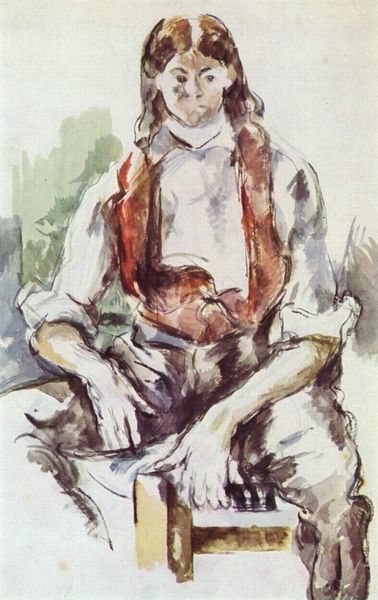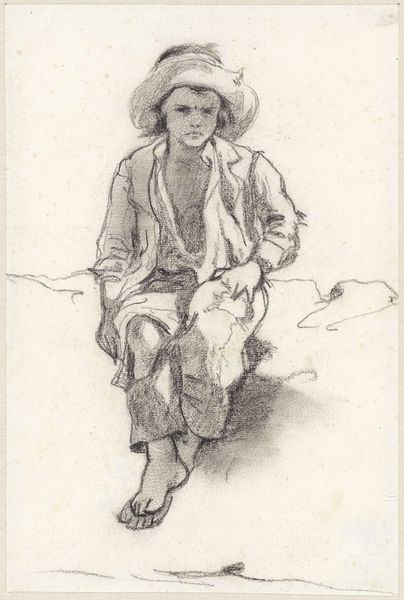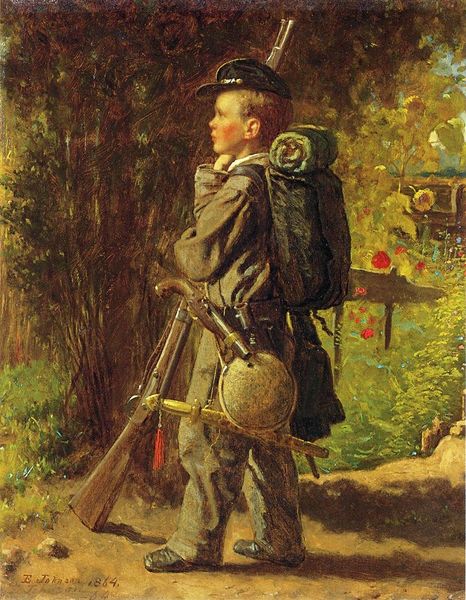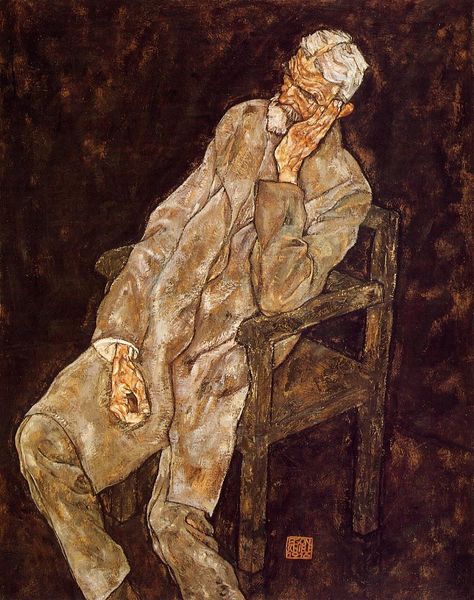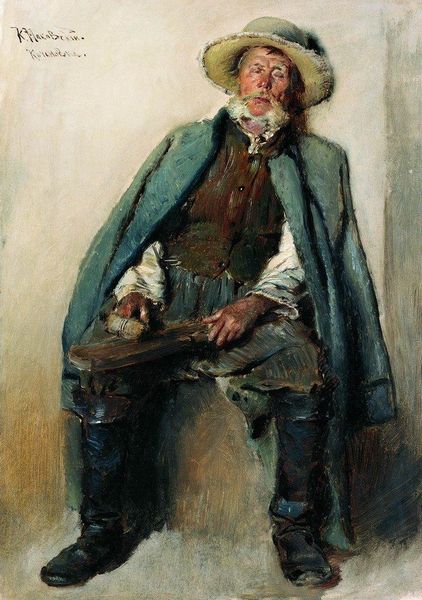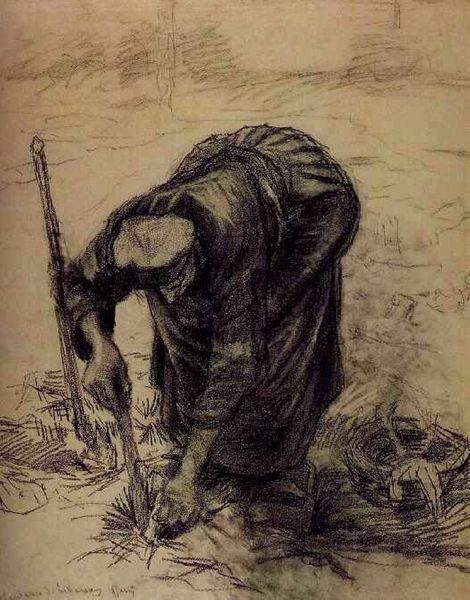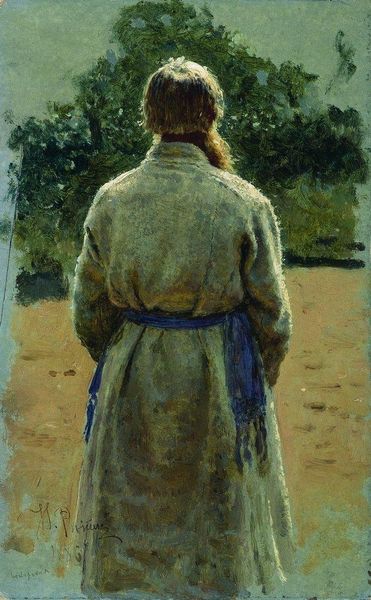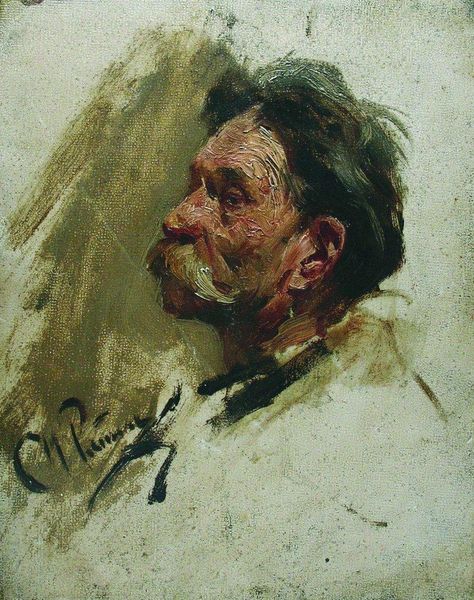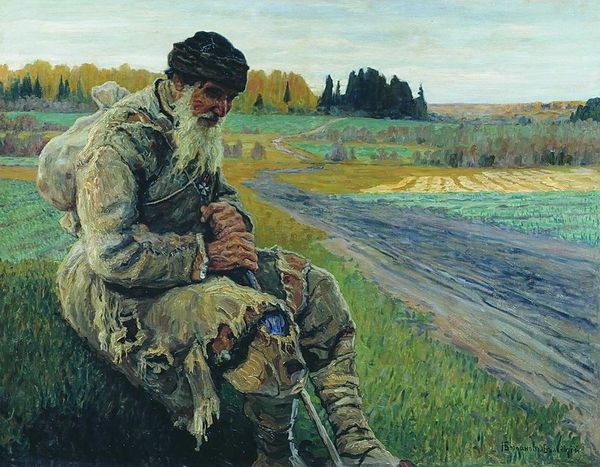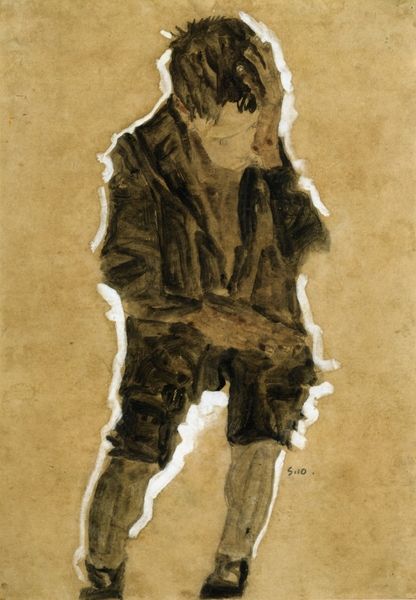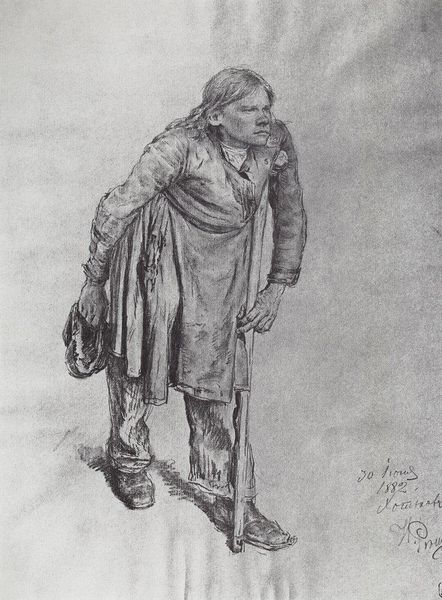
Dimensions: 61 x 52 cm
Copyright: Public domain
Curator: Up next we have "Hunchback (study)," an 1880 piece by Ilya Repin, rendered in watercolour. It’s currently held at the Tretyakov Gallery in Moscow. Editor: What strikes me immediately is the posture—the downward gaze, the slouch, almost as if the weight of the world is pressing down on this figure. Curator: Exactly! It is a really arresting portrait of vulnerability. Repin, often associated with Russian realism, wasn't afraid to confront uncomfortable truths. And you have to think, what could that curve in his spine possibly symbolize? Oppression? Hardship? Editor: The curve certainly draws attention. It is the thing your eyes fall upon and linger at. Perhaps it represents societal burdens or inherited trauma made manifest— a symbol etched onto the body. What stories do you think are being held within this single figure? Curator: That's where the genre element steps in, I think! We see him placed, presumably, within the boundaries of a park setting— and immediately, there’s a strong contrast. Is this respite? Reflection? Or is his placement a purposeful disruption—placing him into relief against any sense of idyllic rest? Editor: Oh, interesting. Visually, he absolutely blends into this idyllic surrounding of neutral colors; even his garments blend with this washed background and foreground. There's a harmony despite everything, perhaps echoing the way we internalize our burdens. Curator: Yet even the harmony has a melancholic cast to it. Note Repin's restrained color palette; it echoes, enhances, or, you know, creates the figure's contemplative mood. The soft washes are so gentle they almost belie the underlying sadness. And that stick, propped rather elegantly across his lap. Another visual weight of necessity? Editor: Precisely! Symbols rarely shout; they whisper, inviting contemplation. This simple stick hints at a larger story. Does it suggest fragility or, ironically, resilience and survival? It transforms from tool to emblem—bearing the weight and the wisdom of this gentle figure. Curator: And with that visual wisdom, it’s the artist's wisdom we encounter, too. The power of seeing and really feeling seen— not with pity but, perhaps, a recognition of our own shared vulnerabilities. Editor: A resonant note, reminding us that visual symbols hold universal echoes. They capture both what is seen and felt.
Comments
No comments
Be the first to comment and join the conversation on the ultimate creative platform.
